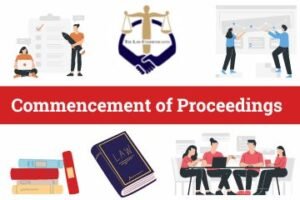Written by: Kajal Kumari
Introduction:
Article 368 of the Constitution of India deals with the “power of Parliament to amend the Constitution and procedure, therefore”. The Constitution of India under Article 368 lays down the provisions relating to the Amendment of the Constitution. For the purpose of Amendment, three types of procedures are resorted to:
- Amendment by Simple Majority: Articles that can be amended by a simple majority are kept outside the purview of Article 368.
- Amendment by Special Majority: Articles of the Constitution which can be amended by the special majority as laid down in Article 368 must be effected by a majority of a total membership of the house and a majority of not less than 2/3rd of the members of the house present and voting.
- Special Majority and Ratification by States: the following provisions require such ratification by the State:
- Election of President: Articles 54 and 55.
- The extent of Executive Powers of Union and States: Articles 73, 162, and 279A.
- Articles dealing with the appointment of Judges in Supreme Court and High Courts: Articles 124- 147 for Supreme Court, Articles 214-231 for High Courts.
- Distribution of Legislative Powers between Union and States: Articles 245-255.
- Any of the lists in the 7th Schedule.
- Representation of States in Parliament.
- Provisions of Article 368 itself.
Cases on Amendment of Fundamental Rights:
The question of whether Fundamental Rights can be amended under Article 368 came for consideration for the first time in the case of Shankari Prasad v. Union of India, 1951 SC, in this case, the validity of Constitution First Amendment Act, 1951 which inter-alia inserted Article 31A and 31B was challenged. It was contended that the word ‘law’ used in Article 13(2) includes the Constitutional Amendment made under Article 368.
\The Honourable Supreme Court rejecting the contention held that the word ‘law’ used in Article 13(2) includes only an Ordinary Law made in the exercise of Legislative Power, and does not include a Constitutional Amendment made in the exercise of the Constituent Power. Therefore, the Court made a distinction between an Ordinary Law and Law made in the exercise of Constituent Power. The net effect of the Supreme Court’s decision in the Shankari Prasad case was that amendments in the Constitution could not be reviewed by Courts.
In Sajjan Singh v. the State of Rajasthan, 1965 SC, the validity of the Constitution 17th Amendment Act, 1964 which inserted 44 statutes in the Ninth Schedule was challenged.
The Honourable Supreme Court while upholding the Shankari Prasad case held that the words Amendment of the Constitution means Amendment of all the provisions of the Constitution.
In I.C. Golaknath v. the State of Punjab, 1976 SC, the landholders deprived of their surplus landholding under State Land Reform Legislation challenge the validity of the first, fourth, and seventeenth Amendments.
In this, the Honourable Supreme Court by a majority of 6:5 prospectively overruled the Shankari Prasad and Sajjan Singh cases. It was held that the distinction between Constituent Power and Legislative Power as laid down in the case of Shankari Prasad v. Union of India was unfounded. In other words, the Constitutional Amendments fell within the purview of law under Article 13(2) and Courts could review them if they violated the Fundamental Rights of Citizens.
It was also held that the Power of Parliament to amend the Constitution is derived from Article 245 read with Entry 97 of the list I of the Constitution and not from Article 368. Article 368 lays down merely the procedure for the amendment of the Constitution.
However, the Court did not strike down the first, fourteenth, seventeenth Amendment Act and applied the doctrine of prospective. Overruling and held that this decision will have a prospective effect. It means that all cases decided before the Golaknath case shall remain valid.
24th Amendment Act, 1971:
In order to remove the difficulties created by the Judgement in the Golaknath case, Parliament passed the 24th Amendment Act, 1971. It inserted clause 4 to Article 13 and also clause 3 to Article 368. It also substituted the title of Article 368, ‘Power of Parliament to amend the Constitution and procedure therefor’ in place of ‘Procedure for Amendment of the Constitution’. It also inserted clause 1 to Article 368 wherein it is laid down that the Parliament may in the exercise of its Constituent Power amend by way of addition, variation, or repeal any provision of the Constitution and this shall have an overriding effect over other provisions of the Constitution.
Keshvananda Bharti v. State of Kerala, 1973, in this case, the validity of the Constitution 24th Amendment Act, 1971 was challenged. The issue in this case, what was the extent of Amending Power of Parliament under Article 368. It was held that Article 368 even before the 24th Amendment Act contained the power as well as the procedure for amendment. The 24th Amendment merely made explicit what was implicit in the unamended Article 368. The Court held that Parliament has wide power of amendment of any part of the Constitution including the Fundamental Rights, but that power is not unlimited. Parliament can not amend the basic feature or framework of the Constitution. In other words, the Amendment of the Constitution can not have the effect of destroying and abrogating the basic framework of the Constitution.
39th Amendment Act, 1975:
By way of this Act, the Parliament inserted Article 329A in the Constitution by which election disputes related to election were to be decided by a special body constituted by Parliament and not by Courts. This amendment was given a retrospective effect.
In Indira Gandhi v. Raj Narain, 1975 SC, The Supreme Court struck down clause 4 of Article 329A on the ground that it was beyond the Amending Power of Parliament as it destroyed the basic feature of the Constitution.
42nd Amendment Act, 1976:
This Amendment Act is also known as Mini Constitution. This amendment inter-alia inserted clauses 4 and 5 to Article 368. As per clause 4, any amendment of the Constitution made could not be called in question in any court on any ground, as per clause 5, the Parliament has given unlimited power to amend any provision of the Constitution.
In Minerva Mills v. Union of India, 1980 SC, the Honourable Supreme Court struck down clauses 4 and 5 of Article 368 as inserted by 42nd Amendment Act on the ground these clauses violate the basic feature of the Constitution. It was held that Judicial Review and Limited Amending Power is part of the basic structure of the Constitution. The Court also declared invalid the amendment made to Article 31C giving primary to all Directive Principles of State Policy over Fundamental Rights, laid down in 14, 19, 31.
Conclusion:
The supremacy of the Constitution, republican, democratic form of the Government, secular character of the Constitution, separation of powers, and federal character of the Constitution are some of the basic features of the Constitution as laid down by Chief Justice Sikri.[1]
Free and fair elections constitute an essential postulate of democracy which in turn was a part of the basic structure of the Constitution. Rule of Law, Judicial Review, Democracy which implies free and fair elections are also basic structures of the Constitution.[2]
Reference
[1] Keshvananda Bharti v. State of Kerala, 1973.
[2] Indira Gandhi v. Raj Narain, 1975.
Previous Posts
Right to form association or unions: Constitutional, legislative and judicial perspective
Right to get water: the recent development and constitutional framework
The International Criminal Court as a Court – An Evaluation
Victims of crime: Restoration and Legal care under Indian Criminal Jurisprudence




